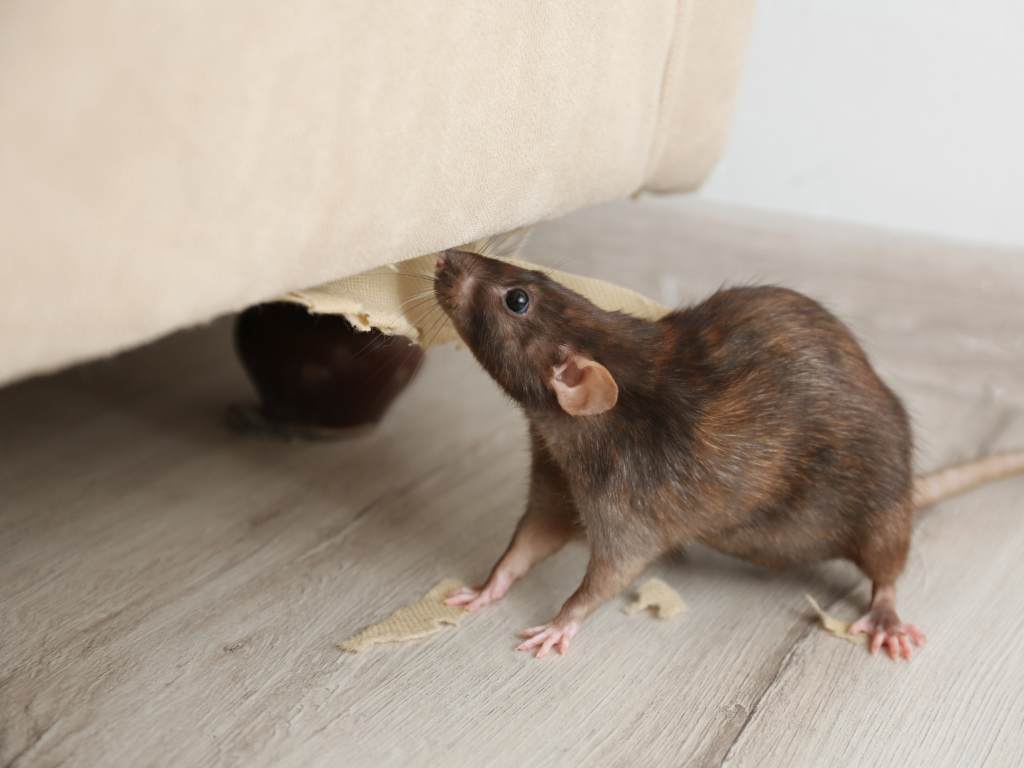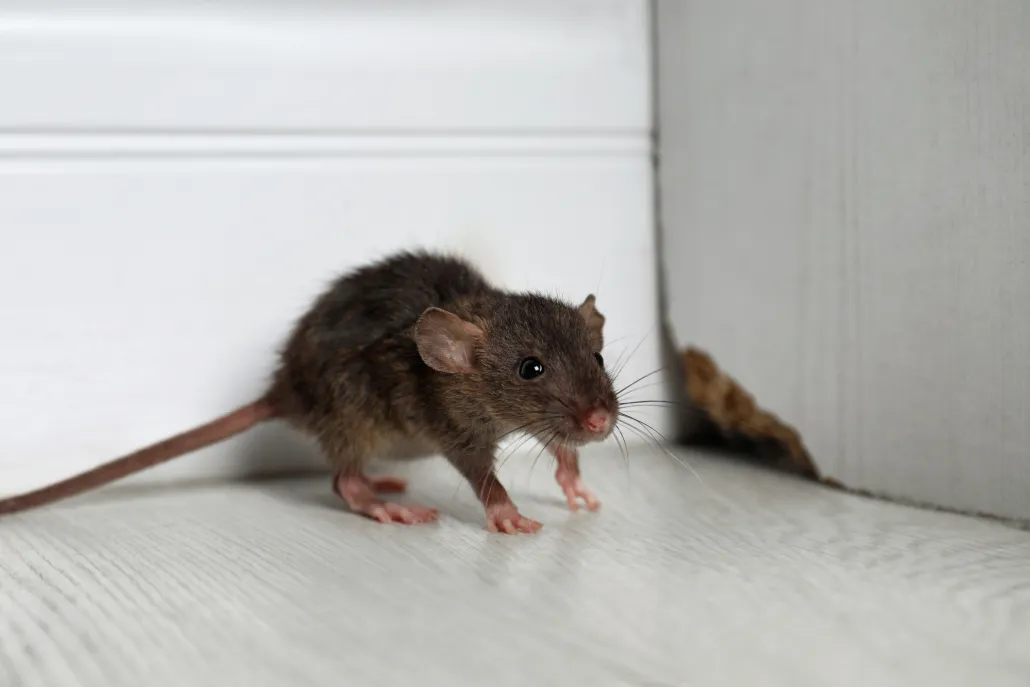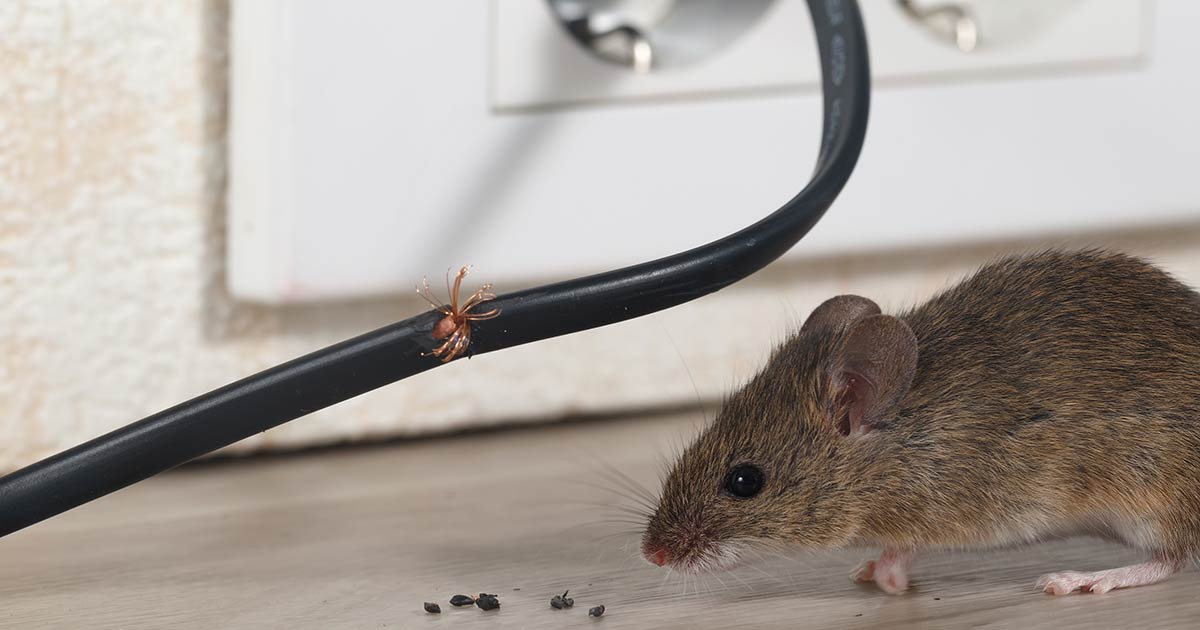Rodent Treatments in Florida
Exterminator Services for Fort Myers, Estero, and Immokalee
Florida’s subtropical climate, marked by abundant sunshine and mild winters, creates a comfortable environment not just for people but also for a variety of rodents. Rats and mice, in particular, can thrive where food, water, and shelter remain readily available. In places like Fort Myers—a region bustling with diverse neighborhoods and active commercial centers—rodents can quickly make their way into homes, businesses, and other structures if property owners are not vigilant. Once these pests settle inside, they breed rapidly, cause damage to walls or wiring, and pose health risks to occupants. Recognizing how rodents adapt to Florida’s conditions, spotting the early signs of infestation, and seeking professional help can make a significant difference in maintaining a clean, rodent-free environment.
This service page explains how rodents flourish in Florida’s climate, why hiring a skilled rodent exterminator can protect your property, and how detailed treatments can address infestations in Fort Myers, Estero, Immokalee, and beyond. Early detection is essential: waiting too long allows rodent populations to expand, leading to costly repairs, potential contamination, and safety hazards. In the sections below, you will find critical information on indicators of rodent activity and the practical benefits of professional rodent control services.
Why Rodents Flourish in Florida

1. Warm, Subtropical Climate
Rodents rely on moderate temperatures to stay active and reproduce. In colder regions, harsh winters often reduce rodent populations. In Florida, however, temperatures rarely drop low enough to have the same effect. Even if a brief cold spell occurs, rodents frequently seek warmth and shelter inside attics, crawl spaces, or behind walls. Because Florida’s coastal areas, including Fort Myers, Estero, and Immokalee, typically hover above freezing, rodents can remain active all year, reproducing without the natural checks provided by harsh seasonal weather.
2. Abundant Food Sources
Florida offers a wide array of food opportunities for rats and mice. Residential properties may have trash cans, pet food, unsealed pantry items, or small crumbs left on countertops. Commercial venues—like restaurants, warehouses, or convenience stores—can also unknowingly supply ample sustenance if proper sanitation is overlooked. Outside, the subtropical vegetation drops seeds and fruit that rodents can consume. Once rodents identify a reliable food source, they stay close by, continually feeding and reproducing in a self-sustaining cycle.
3. Indoor Shelters in All Seasons
Although Florida does not endure the same harsh cold as northern regions, rodents still prefer indoor shelters for warmth, safety, and consistent food access. Basements, garages, and wall voids offer excellent nesting areas shielded from predators and severe weather. Many Florida homes feature crawl spaces, older vents, or improperly sealed utility openings that create hidden entry points. Rats and mice can squeeze through gaps the size of a dime, allowing them to slip into a property without immediate detection. Once inside, they often build nests using paper, insulation, or any soft material they find.
4. Year-Round Breeding Cycles
Because of Florida’s mild climate, rodents face few weather-related barriers to their reproductive cycles. Female rats and mice can produce multiple litters annually, each litter containing several offspring. A small rodent presence can balloon into a large infestation if it remains undetected. Rapid breeding means that even a few rodents can generate dozens more in only a few months, creating an urgent need for quick action. Enlisting the aid of a professional exterminator as soon as rodents appear can halt these cycles and prevent larger problems down the line.
Telltale Signs of Rodents
1. Droppings
Rodent droppings are small, often shaped like elongated pellets. Mice droppings are typically about one-quarter inch long, while rat droppings can be a bit bigger. Droppings commonly appear near walls, behind kitchen appliances, under sinks, or inside pantries. Fresh droppings tend to be darker and slightly moist, while older ones turn crumbly and grayish. Finding a significant number of droppings concentrated in one place is a strong indicator of active rodent presence.
2. Gnaw Marks
Rats and mice must gnaw constantly to keep their incisors from growing too long. You might see chew marks on wooden beams, cardboard boxes, baseboards, or even plastic containers. Wires are particularly at risk, posing potential safety hazards if they become frayed. Look for small holes or chipped edges around doors, furniture, or in cabinets. Gnaw marks can also appear near entry points where rodents enlarge existing gaps to make it easier to pass through.
3. Noises in Walls or Attics
One of the most common early signs of rodent activity is hearing unusual noises at night. Scurrying, scratching, or squeaking sounds in the walls or ceiling suggest that rodents are moving between their nest and food sources under cover of darkness. Because they tend to avoid human contact, nighttime is often their peak period of activity. If you hear persistent rustling late in the evening or before dawn, rodents are likely exploring your home.
4. Greasy Rub Marks
Rats, in particular, have oily fur that can leave smudges or rub marks along the walls or baseboards they frequently travel. Over time, these dark streaks become visible, marking a well-used path between the rodents’ shelter and food supply. Inspect corners, lower walls, and tight passageways for discolored trails that could indicate a rodent runway.
5. Pet Behavior Changes
Pets sometimes detect rodent activity before their owners do. If a cat or dog becomes fixated on a particular spot—such as behind an appliance, under furniture, or inside a closet—they may be sensing or hearing rodents. Pay attention to sudden alertness, pacing, or sniffing in unusual corners of the house, as these could be signs that rodents are hiding nearby.
Risks of Ignoring Rodents
1. Rapid Population Growth
Rodents multiply quickly, especially in Florida’s climate, where they are active year-round. A few rats or mice can become a full-blown infestation if the early warning signs are not addressed promptly. Delaying treatment allows them to breed in hidden areas, creating an even more widespread issue that will require extensive control measures.
2. Health Hazards
Rats and mice can carry pathogens that threaten human and pet health. Their droppings and urine may contaminate countertops, dishes, and stored food, exposing residents to illnesses like salmonella or hantavirus. Furthermore, fleas or ticks hitching rides on rodents can introduce secondary pest problems, adding yet another layer of health concern. Thorough rodent management helps prevent these contamination risks.
3. Structural and Property Damage
Rodent teeth never stop growing, causing them to gnaw on whatever is available. This includes electrical wiring, which can lead to fire hazards, short circuits, or expensive repairs. Insulation may be shredded to make nests, undermining a property’s ability to regulate temperature effectively. Over time, unchecked rodent damage can result in extensive repair costs and devalue the property.
4. Spread to Neighboring Units or Properties
Multi-unit residences, such as apartment complexes or condos, face a greater risk of rodent infestations spreading from one unit to another. Rodents move through shared walls, ceilings, and utility lines, making it imperative to control the problem before it proliferates. Similarly, in commercial or agricultural settings, ignoring an infestation on one property can create issues for neighboring farms, businesses, and residences.
5. Reputation Concerns
Restaurants, retail stores, and hospitality venues that experience rodent sightings can face significant backlash from customers. Negative word-of-mouth or public complaints can harm the reputation of an establishment, leading to reduced foot traffic or stricter regulatory scrutiny. For property management companies or vacation rentals in areas like Fort Myers, Estero, and Immokalee, a rodent-free environment is key to maintaining a welcoming image.
Why a Professional Exterminator Is Crucial
1. Accurate Assessment and Identification
Not all rodents are the same. Mice, roof rats, and Norway rats have different nesting preferences, diets, and behaviors. A professional rodent exterminator can correctly identify which species is present, ensuring that treatments and strategies match the specific pest. Accurate identification is critical to selecting traps, baits, and exclusion methods that yield lasting results.
2. Comprehensive Treatment of All Life Stages
Killing visible adult rodents is only part of the solution. Their nests, containing juveniles or eggs, could remain hidden behind walls or in hard-to-reach areas. Without addressing these younger generations, the problem will quickly resurface. Professionals develop full-scale approaches that tackle breeding grounds, adult populations, and lingering attractants, ensuring no segment of the rodent population is overlooked.
3. Safe Handling of Products and Equipment
Over-the-counter rodent control products, if misapplied, can be harmful to children, pets, or local wildlife. Experienced exterminators know how to deploy baits or traps in ways that reduce risks while effectively targeting the rodents. By applying well-tested methods and products, they minimize the impact on non-target species and maintain a safer environment for everyone.
4. Long-Term Prevention and Exclusion
Exterminators do more than just eradicate the current population. They also focus on preventing future invasions by pinpointing and sealing entry points. Rodents often enter through gaps near roofs, around plumbing lines, or underneath doors. Blocking these openings with sturdy materials is a critical step in keeping rodents out. Professionals also provide valuable guidance on maintaining a clean, less rodent-friendly environment in the long run.
5. Follow-Up Support
Even after an initial round of treatments, a few rodents or newly hatched young may remain undetected. Reputable rodent control teams generally offer follow-up support, assessing whether the infestation has truly ended and advising if any additional measures are needed. This ongoing commitment helps ensure that small pockets of rodents do not rebound into a larger, more troublesome infestation.

Typical Methods for Rodent Treatments
1. Inspection and Mapping
Every effective rodent control program begins with a thorough inspection. The exterminator checks both interior and exterior areas for droppings, gnaw marks, nest materials, and potential entry points. By charting the rodents’ movement patterns, they can focus treatment methods on the most heavily trafficked areas.
2. Trapping and Baiting
Various traps—snap traps, multiple-catch traps, or live traps—may be used to quickly reduce rodent numbers. Bait stations, sealed containers holding rodenticide, are also employed in spots that rodents frequent, reducing human and pet exposure. Placed carefully, these devices yield swift results, preventing rodents from roaming freely around the property.
3. Exclusion Work
Blocking access is crucial to stopping rodents from re-invading after treatment. Small holes near cables, vents, or pipes should be sealed with rodent-resistant materials like steel wool or metal flashing. Damaged door sweeps or broken window seals need repairing to eliminate easy entry routes. Even minor cracks can become thoroughfares for rodents seeking a warm, food-rich shelter.
4. Sanitation and Cleanup
Reducing clutter and clearing away potential nesting materials help remove the places rodents hide. Stored goods, papers, or boxes can be reorganized to limit dark corners. Food scraps and unsecured garbage cans serve as rodent magnets, so cleaning these up prevents re-infestation. Disinfecting areas contaminated by droppings or urine protects occupants from illnesses and creates a less attractive environment for future rodents.
5. Monitoring and Follow-Up
After the initial treatment, rodent control specialists often recommend monitoring devices or scheduled check-ins. Fresh droppings, chew marks, or sightings of any surviving rodents can be quickly identified and dealt with. If new entry points develop over time, additional exclusion work can fortify the structure further. These continued efforts ensure that rodents remain at bay.
Service Areas
Fort Myers
Fort Myers, a popular coastal city in southwestern Florida, features warm weather, riverfront attractions, and bustling commercial centers. These conditions offer rodents a wealth of resources, including easy entry into older buildings and an abundance of dining establishments that might unintentionally provide meals. Rodent treatments here focus on tailoring strategies to building age, local climate specifics, and the proximity of natural water sources that can contribute to rodent traffic.
Estero
Estero lies between Fort Myers and Naples, blending suburban neighborhoods with natural preserves. The balanced mix of residential areas, retail complexes, and scenic outdoor spaces can unfortunately cater to rodents looking for year-round shelter. Whether you manage a local shop or own a private home in Estero, rodent extermination measures can safeguard you from the damaging impacts of an unchecked infestation.
Immokalee
Immokalee, renowned for its agricultural output and rural landscapes, experiences unique rodent challenges due to the presence of farmland, produce storage, and livestock feed. Rodents can infiltrate barns, storage facilities, and nearby residential structures if not properly contained. Effective rodent control in Immokalee tackles both indoor and outdoor issues, accounting for the continuous influx of rodents seeking food and nesting locations within this agricultural setting.
Why Our Rodent Treatments Excel
1. Florida-Focused Expertise
Experience in Fort Myers, Estero, and Immokalee underpins the approach we take to rodent control. Knowledge of each area’s climate, wildlife patterns, and building styles allows us to craft solutions that handle rodent behavior effectively.
2. Thorough Inspections and Customized Plans
Not every property has the same vulnerabilities. A sprawling farm near Immokalee faces different pressures than a retail store in downtown Fort Myers. By inspecting your site thoroughly, we create a plan suited to your specific circumstances, ensuring a more efficient and long-lasting resolution.
3. Emphasis on Safety and Minimal Disruption
We prioritize techniques that address rodent activity while minimizing disruption to your daily life. Treatments remain targeted and localized to reduce possible risks for residents, pets, or patrons. Clear instructions on post-treatment procedures help maintain a safe and comfortable environment.
4. Ongoing Education and Support
An educated client is one step closer to enjoying a rodent-free property. We offer guidance on sanitation, storage, and structural improvements that lessen the appeal of your home or business to rodents. Should you notice renewed rodent activity or potential entry points, we stay available to provide additional support.
5. Broad Reach and Quick Response
With extensive service coverage throughout southwestern Florida, we can respond quickly to rodent concerns in Fort Myers, Estero, Immokalee, and the surrounding communities. Swift action is key in stopping rodent populations from exploding beyond control.
Next Steps
If you hear rustling at night, discover droppings, or notice gnaw marks around your home or workplace, do not wait. Contact us to learn more or schedule your service. Acting promptly often means fewer rodents to remove and less long-term damage. By combining professional inspections, proven extermination methods, and preventive measures, our rodent treatments serve as a thorough, reliable defense for properties across Fort Myers, Estero, and Immokalee.
Early detection remains the most effective way to halt rodents before they become entrenched. Protect your structure, belongings, and well-being by enlisting expert help at the first sign of trouble. With a professional exterminator on your side, you can reclaim your home or business from these persistent pests and safeguard your property’s integrity for years to come.

Maintaining a Rodent-Free Environment
- Seal Potential Entry Points
Inspect your property inside and out for cracks, gaps, or holes that rodents might use. Close off even small openings with durable materials such as steel wool or metal flashing. - Practice Proper Sanitation
Store food in sealed containers, discard waste regularly, and clean up any spills or crumbs. The less accessible food is, the less attractive your space becomes to rodents. - Eliminate Clutter
Stacks of paper, boxes, and other debris offer rodents ideal nesting sites. Keep storage areas organized, off the floor, and routinely checked for signs of damage. - Monitor Pet Food
Feed pets on a schedule rather than leaving food out continuously. Keep leftover food sealed away in sturdy containers to prevent easy rodent access. - Check Exterior Landscaping
Overgrown shrubs or tree limbs touching rooftops can serve as rodent highways. Trim or remove these possible routes and store firewood or equipment away from walls. - Stay Alert
Stay vigilant by looking for fresh droppings, gnaw marks, or tracks. Early warning signs allow for immediate intervention before an infestation spreads.
With consistent upkeep, mindful organization, and professional exterminator services when needed, property owners in Fort Myers, Estero, and Immokalee can remain ahead of rodent issues throughout Florida’s mild seasons. Taking simple steps to deny rodents shelter and food drastically lowers the odds of an infestation taking root. When combined with expert rodent control methods, these strategies work together to preserve the comfort, safety, and cleanliness of any home or commercial property—even under the year-round breeding conditions that characterize Florida’s subtropical climate.
